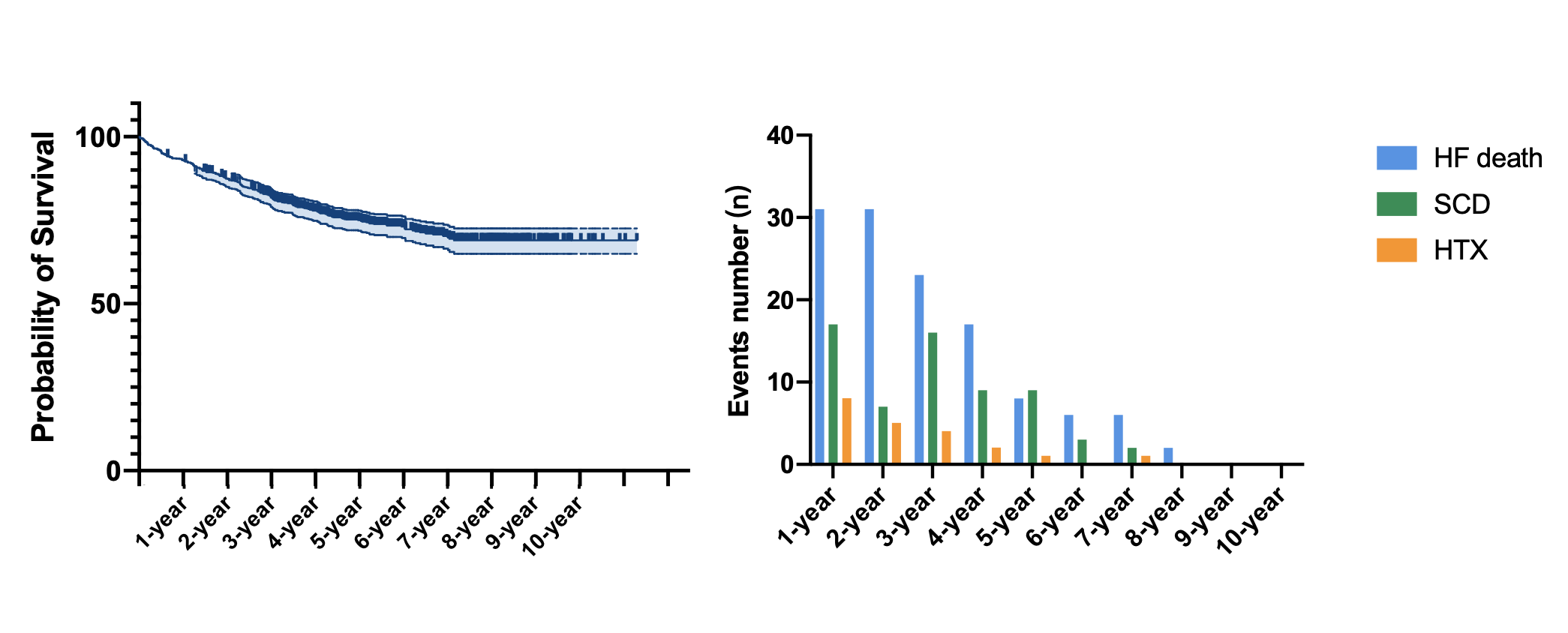Oral Abstract
Natural History and CMR Insights into Short-Term, Mid-Term, and Long-Term Prognosis of Dilated Cardiomyopathy: DEMAND study
- YX
Yuanwei Xu, MD
Dr.
West China Hospital, China (People's Republic) - YX
Yuanwei Xu, MD
Dr.
West China Hospital, China (People's Republic) - YL
Yangjie Li, MD
Dr.
West China Hospital, China (People's Republic) 
Yucheng Chen, MD
Dr.
West China Hospital, China (People's Republic)
Presenting Author(s)
Primary Author(s)
Co-Author(s)
The prognosis of dilated cardiomyopathy (DCM) patients is a critical clinical issue. There is currently a lack of large-scale clinical cohort studies and long-term follow-up data on patient survival and risk factors for adverse events across different periods. This study aims to investigate the baseline characteristics and risk factors associated with adverse events during short-term, mid-term, and long-term periods.
Methods: The participating patients were prospectively enrolled between June 2012 and April 2019 as part of the prospective clinical registration DEMAND study [DEep phenotypic Multimodality-based Analysis of Dilated Cardiomyopathy], which is registered with the Chinese Clinical Trial Registry (ChiCTR1800017058). The baseline clinical, biomarkers, and cardiac magnetic resonance (CMR) imaging characteristics were evaluated. The primary endpoints were the combination of cardiac death and heart transplantation.We defined primary endpoints occurring within one year of enrollment as short-term events, those occurring between 1-5 years as mid-term events, and those occurring after more than 5 years as long-term events.
Results:
Among 825 DCM patients enrolled, 218 (26.4%) experienced primary endpoint during follow-up (median follow-up: 59.3 months; interquartile range: 37.9-79.4 months). Among a total of 58 patients experienced primary endpoints within the first year (short-term events), 139 patients between 1 to 5 years (mid-term events), and 21 patients after more than five years (long-term events). The results of Cox regression analyses found that ln(NT-proBNP), LVEDVi, and T1 value had independent prognostic value for short-term events. The ln(NT-proBNP), LVEDVi, and the presence of LGE had independent prognostic value for mid-term events. While the LVEDVi and the diffuse pattern of LGE showed independent prognostic value for long-term events.
Conclusion: The annual event rate is highest during the first year and shows a declining trend over time in DCM patients. LVEF and RVEF are significant risk factors across all periods, with the greatest impact on short-term prognosis. The free wall-only LGE is associated with a higher risk of short-term events, while diffuse LGE indicates a greater risk of long-term primary outcomes.

